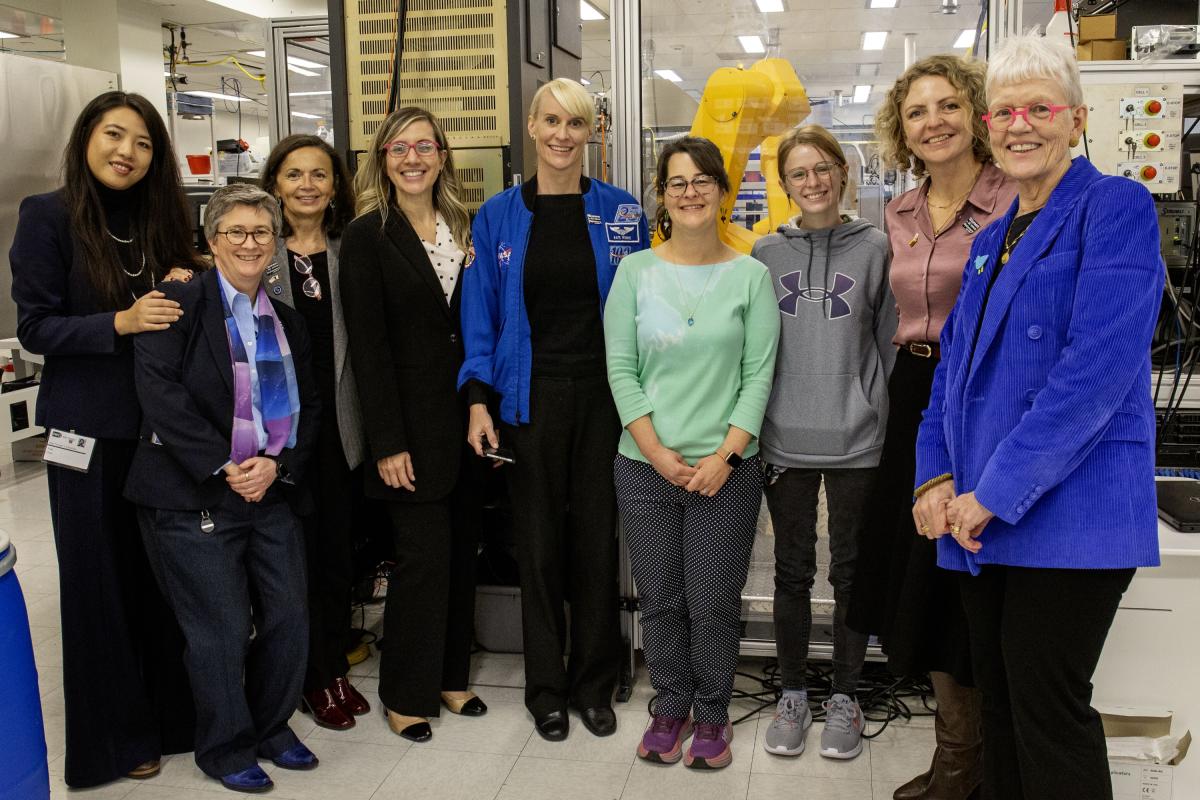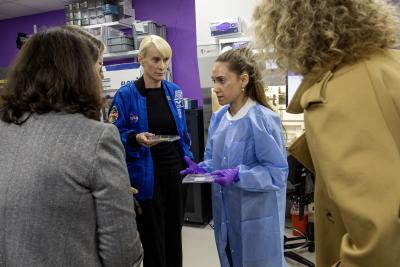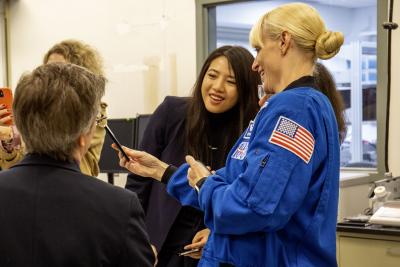Snapshots
AstroKate Inspires Young Scientists During STEM Panel, NCATS Tour
Women in Leadership Discuss Challenges, Successes in Work and Life
BY TERRY RUDD, NCATS

CREDIT: NCATS
Pictured from left to right are Claire Chen, NCURA Global Initiative senior executive; Joni Rutter, NCATS director; Mirielle Guyader, Embassy of France counselor for science and technology; Giusi Condorelli, Embassy of Italy science attaché for health; Kate Rubins, NASA astronaut; Carleen Klumpp-Thomas, NCATS Research Services Core team leader; Savannah Wood, NCATS Research Services Core member; Evelina Sante-Kahle, Embassy of Germany science counselor; and Kerstin Hildebrandt, Children’s National Hospital vice president of research administration.
NCATS landed NASA Astronaut Kathleen “Kate” Rubins for an inspiring day of scientific career discussions and a firsthand look at NCATS’ earthbound and space-tested biotechnologies.

CREDIT: NCATS
Kate Rubins holds a 3D tissue bioprinting plate while Cristina Antich Acedo of the NCATS 3D Tissue Bioprinting team explains her work.
Popularly known online as “AstroKate,” Rubins has flown two space-flight missions, logged 300 days in space, and conducted four spacewalks. Her tour of NIH included visits to NCATS and NHGRI labs. At NCATS, she joined the NCATS Women in Science Leadership Panel discussion (available on VideoCast) with an all-women panel of NIH institute directors and Women in Science Diplomacy Association members. NCATS Director Joni Rutter sat down with Rubins for a fireside chat to talk about her experiences in space and beyond. The panel members then shared their own career journeys in science, technology, engineering, and medicine. They also offered valuable insights to inspire the next generation of women shaping scientific research and innovation.

CREDIT: NCATS
Claire Chen and Kate Rubins examine a 1,536-well assay plate used in the NCATS Automation Laboratory.
Rubins and her scientific colleagues then traveled to NCATS’ Rockville, Maryland, state-of-the-art laboratories, where they talked tech and shared insights with intramural scientists doing 3D tissue bioprinting, high-throughput drug screening, compound management, and more.Rubins is no stranger to NCATS-supported translational science technology—on earth or in orbit. While aboard the International Space Station, she worked with tissue-chip experiments as part of the NCATS-led Tissue Chips in Space initiative.
“We were truly over the moon to have Dr. Kate Rubins with us,” said NCATS chief punsmith Rutter. “She is a true star.”
This page was last updated on Friday, January 3, 2025
